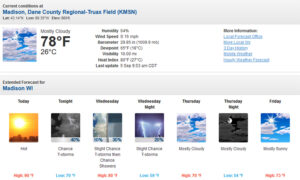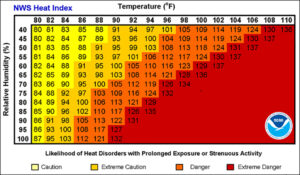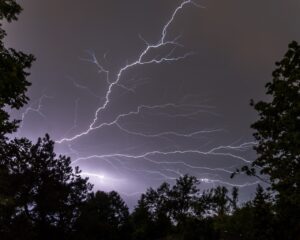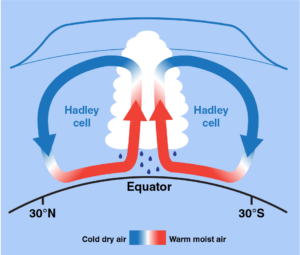This is a very interesting question whose answer helps to further elucidate the difference between climate and weather.
As it turns out, predictions of the coming weather are nearly exclusively dependent on the observed conditions of the atmosphere in the day prior to the forecast period. These conditions are known formally as initial conditions. Those initial conditions are only partially sampled by the many observational platforms (routine surface observations, upper air observations and various satellite platforms, for instance) that have been devised over the years.
These initial conditions are fed into sophisticated computer programs known as numerical weather prediction models, and the ensuing calculations give meteorologists guidance in creating their forecasts.
Even though the climate is changing in the background, accurate measurements of these initial conditions is not substantially affected by that change, and so the forecast models are unaffected. Consequently, it is not likely that climate change has any discernible effect on the quality of weather forecasts.

The behavior of the climate system, on the other hand, is governed by a different set of conditions, known as boundary conditions. These include fundamental measures such as the length of the day, the amount of energy coming from the sun and the chemical composition of the atmosphere. Though these conditions do change, they only do so on very long time scales — scales not important to day-to-day weather forecasts.
Steve Ackerman and Jonathan Martin, professors in the UW-Madison department of atmospheric and oceanic sciences, are guests on WHA radio (970 AM) at 11:45 a.m. the last Monday of each month. Send them your questions at stevea@ssec.wisc.edu or jemarti1@wisc.edu.






